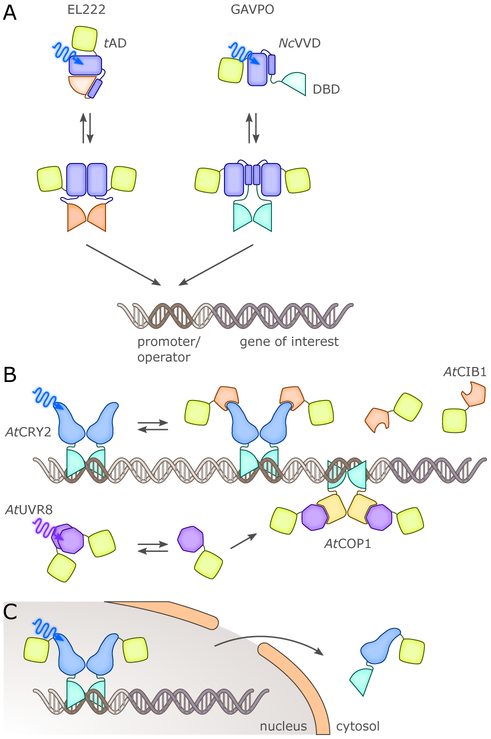Figure 8.
BL-dependent of control of transgene transcription in eukaryotes was realized with single-chain constructs (panels A and C) and with split transcription factors (TF) (panel B). (A) The bacterial LOV receptor EL222 was linked to a eukaryotic trans-activating domain (tAD) to achieve light-dependent control of transgenes in eukaryotic cells.92 The GAVPO approach makes use of the homodimerization reaction NcVivid undergoes upon BL exposure.185 By linking a DNA-binding domain (DBD) and a tAD to NcVivid, a chimeric TF was obtained that in darkness is monomeric and unable to bind to the DNA operator sequence. BL induced dimerization, DNA binding and transcriptional activation. (B) In several studies, split-TF systems were generated, as exemplarily shown for two specific scenarios. (top) Several approaches relied on linking AtCRY2 to a DBD such that upon BL application a tAD, linked to AtCIB1, could be recruited to induce gene expression.51,193 (bottom) Conceptually similar approaches were realized for AtUVR8 which forms a homodimer in the dark but dissociates upon UV-light exposure.194,195 In its monomerized form, AtUVR8 can then bind to AtCOP1. By linking the two proteins to a DBD and tAD, respectively, UV-light-dependent control of transcription was achieved. (C) AtCRY2 was fused with both a DBD and a tAD to yield a single-chain TF.196 BL induced nuclear clearing of this TF, accompanied by downregulation of transcription.

